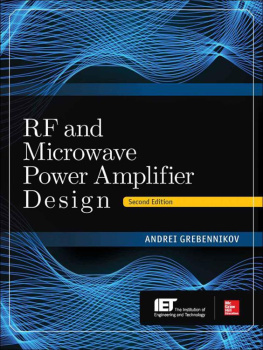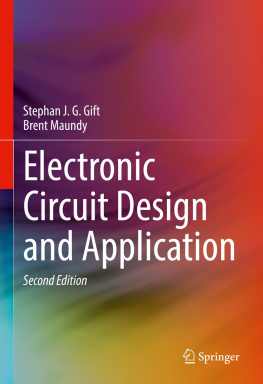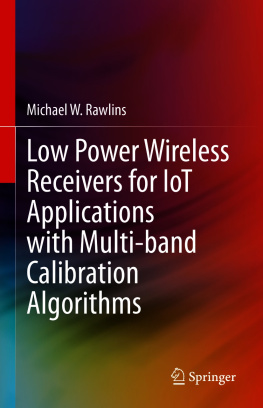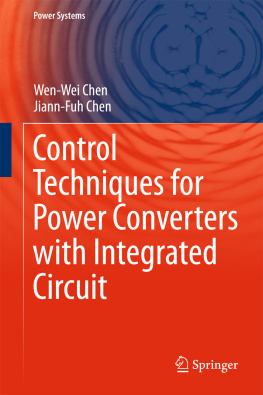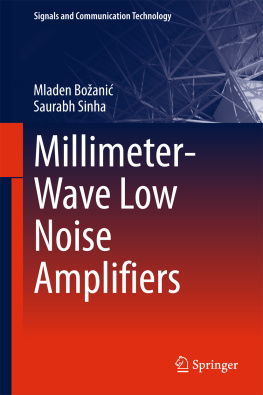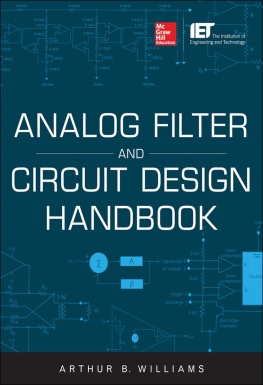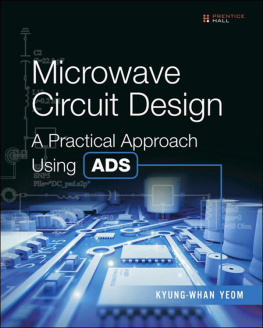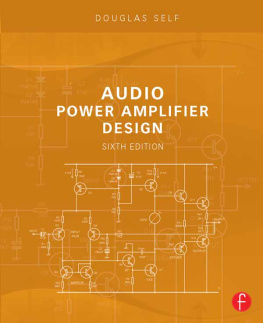About the Author
Andrei Grebennikov received his Dipl. Eng. degree in radio electronics from the Moscow Institute of Physics and Technology, Moscow, Russia, in 1980, and his Ph.D. in radio engineering from the Moscow Technical University of Communications and Informatics, Moscow, Russia, in 1991. He obtained long-term academic and industrial experience working with the Moscow Technical University of Communications and Informatics, also in Moscow, the Institute of Microelectronics (Singapore), M/A-COM (Cork, Ireland), Infineon Technologies (Munich, Germany, and Linz, Austria), and Bell Labs, Alcatel-Lucent (Dublin, Ireland) as an Engineer, Researcher, Lecturer, and Educator. He has lectured as a Guest Professor with the University of Linz, Linz, Austria, and presented short courses and tutorials as an Invited Speaker at the IEEE International Microwave Symposia, European and Asia-Pacific Microwave Conferences, the Institute of Microelectronics (Singapore), the Motorola Design Centre (Penang, Malaysia), the Tomsk State University of Control Systems and Radioelectronics (Tomsk, Russia), and the Aachen Technical University (Aachen, Germany). He is an author and co-author of more than 100 papers, holds 30 European and U.S. patents and patent applications, and has authored six books dedicated to RF and microwave circuit design.

Copyright 2015 by McGraw-Hill Education. All rights reserved. Except as permitted under the United States Copyright Act of 1976, no part of this publication may be reproduced or distributed in any form or by any means, or stored in a database or retrieval system, without the prior written permission of the publisher.
ISBN: 978-0-07-182863-5
MHID: 0-07-182863-X
The material in this eBook also appears in the print version of this title: ISBN: 978-0-07-182862-8, MHID: 0-07-182862-1.
eBook conversion by codeMantra
Version 1.0
All trademarks are trademarks of their respective owners. Rather than put a trademark symbol after every occurrence of a trademarked name, we use names in an editorial fashion only, and to the benefit of the trademark owner, with no intention of infringement of the trademark. Where such designations appear in this book, they have been printed with initial caps.
McGraw-Hill Education eBooks are available at special quantity discounts to use as premiums and sales promotions or for use in corporate training programs. To contact a representative, please visit the Contact Us page at www.mhprofessional.com.
Information contained in this work has been obtained by McGraw-Hill Education from sources believed to be reliable. However, neither McGraw-Hill Education nor its authors guarantee the accuracy or completeness of any information published herein, and neither McGraw-Hill Education nor its authors shall be responsible for any errors, omissions, or damages arising out of use of this information. This work is published with the understanding that McGraw-Hill Education and its authors are supplying information but are not attempting to render engineering or other professional services. If such services are required, the assistance of an appropriate professional should be sought.
TERMS OF USE
This is a copyrighted work and McGraw-Hill Education and its licensors reserve all rights in and to the work. Use of this work is subject to these terms. Except as permitted under the Copyright Act of 1976 and the right to store and retrieve one copy of the work, you may not decompile, disassemble, reverse engineer, reproduce, modify, create derivative works based upon, transmit, distribute, disseminate, sell, publish or sublicense the work or any part of it without McGraw-Hill Educations prior consent. You may use the work for your own noncommercial and personal use; any other use of the work is strictly prohibited. Your right to use the work may be terminated if you fail to comply with these terms.
THE WORK IS PROVIDED AS IS. MCGRAW-HILL EDUCATION AND ITS LICENSORS MAKE NO GUARANTEES OR WARRANTIES AS TO THE ACCURACY, ADEQUACY OR COMPLETENESS OF OR RESULTS TO BE OBTAINED FROM USING THE WORK, INCLUDING ANY INFORMATION THAT CAN BE ACCESSED THROUGH THE WORK VIA HYPERLINK OR OTHERWISE, AND EXPRESSLY DISCLAIM ANY WARRANTY, EXPRESS OR IMPLIED, INCLUDING BUT NOT LIMITED TO IMPLIED WARRANTIES OF MERCHANTABILITY OR FITNESS FOR A PARTICULAR PURPOSE. McGraw-Hill Education and its licensors do not warrant or guarantee that the functions contained in the work will meet your requirements or that its operation will be uninterrupted or error free. Neither McGraw-Hill Education nor its licensors shall be liable to you or anyone else for any inaccuracy, error or omission, regardless of cause, in the work or for any damages resulting therefrom. McGraw-Hill Education has no responsibility for the content of any information accessed through the work. Under no circumstances shall McGraw-Hill Education and/or its licensors be liable for any indirect, incidental, special, punitive, consequential or similar damages that result from the use of or inability to use the work, even if any of them has been advised of the possibility of such damages. This limitation of liability shall apply to any claim or cause whatsoever whether such claim or cause arises in contract, tort or otherwise.

Contents

Preface
T he main objective of this book is to present all relevant information required for RF and microwave power amplifier design, including well-known historical and recent novel schematic configuration, theoretical approaches, circuit simulation results, and practical implementation techniques. This comprehensive book can be very useful for lecturing to promote the systematic way of thinking with analytical calculations, circuit simulation, and practical verification, thus making a bridge between theory and practice of RF and microwave engineering. As it often happens, a new result is the well-forgotten old one. Therefore, the demonstration of not only new results based on new technologies or circuit schematics is given, but some sufficiently old ideas or approaches are also introduced that could be very useful in modern design practice or could contribute to appearance of new general architectural ideas and specific circuit design techniques. As a result, this book is intended for and can be recommended to university-level professorsas a comprehensive reference material to help in lecturing for graduates and postgraduates students, to researchers and scientists to combine the theoretical analysis with practical design and to provide a sufficient basis for innovative ideas and circuit design techniques, and to practicing designers and engineers as the book contains numerous well-known and novel practical circuits, architectures, and theoretical approaches with detailed description of their operational principles and applications.
In , the two-port networks are introduced to describe the behavior of linear and nonlinear circuits. To characterize the nonlinear properties of the bipolar or field-effect transistors, their equivalent circuit elements are expressed through the impedance Z-parameters, admittance Y-parameters, or hybrid H-parameters. On the other hand, the transmission ABCD

